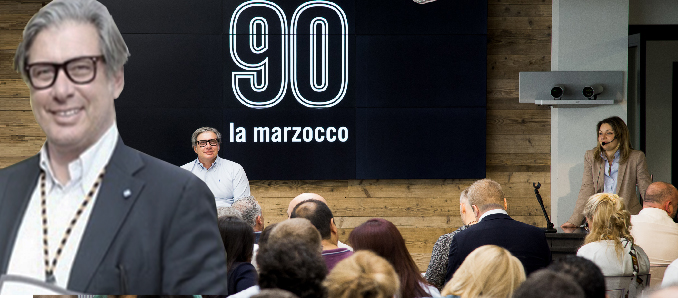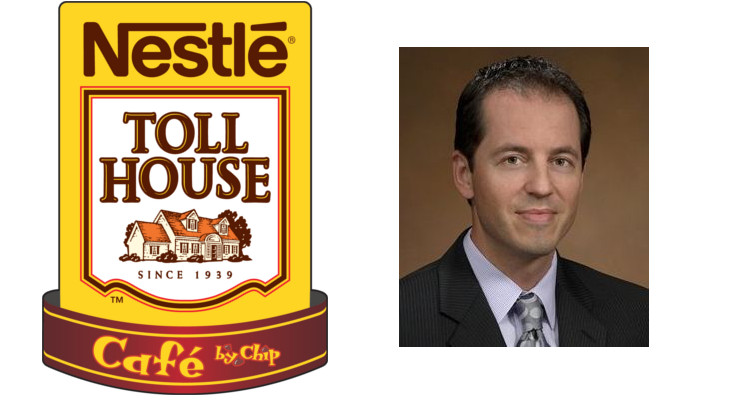Expert’s game changing performance management strategy a boon for food, beverage and hospitality business owners, department heads and human resource managers
If you want to be the best and grow your F&B or hospitality business, not only do you have to hire and reward the best … you must either develop or remove the rest. It’s that simple. Toward this end, you might be surprised to learn that traditional, so-called “tried-and-true” performance management methods fail. One top offender is the ubiquitous and erroneously exalted Performance Review.
According to leadership expert and executive coach Roxi Bahar Hewertson, CEO of Highland Consulting Group, Inc. and AskRoxi.com, “This HR ‘tool’ will not help your business achieve ANY of its growth results. In fact, leaning on performance reviews to assess staffers can greatly increase the likelihood of achieving the exact opposite results.”
Business leaders and human resource professionals have had a doctrine hammered into them that annual evaluations or reviews are sufficient to document employee performance. According to Hewertson, who just released her highly anticipated second book, “Hire Right, Fire Right: A Leader’s Guide to Finding and Keeping Your Best People,” the problem with that logic is it’s short-sighted and often inaccurate. “There are times when managers need to fire someone, but find that nothing in that person’s ‘personnel file‘ indicates a problem, and too often the opposite is true,” she says. “This is a chronic problem when supervisors don’t like to (or don’t know how to) deliver ongoing constructive feedback when it’s needed—all year long rather than during one ceremonial yearly event. This is the stuff grievances, arbitrations and lawsuits are made of and, quite often, are legal battles lost by management for good reason. Having an annual performance evaluation or review isn’t a panacea. It’s more akin to “using a broken crutch for a broken leg.”
In fact, studies are emerging that further substantiate such performance evaluation shortcomings. A recent U.S. National Library of Medicine/National Institutes of Health study published in 2020 provides evidence that “performance feedback discussions can have counterproductive effects by increasing the recipient’s self-serving attributions for past performance,” with unintended associated effects including “lower feedback acceptance” and “lower motivation to change.”
Businesses need something far more effective because the “old way” is just not going to help retain your best talent, engage your high potentials, or course correct below-par performance. Ultimately, annual performance evaluations are a waste of management’s time and your organization’s money while exacerbating opportunity loss. And, “nearly everyone hates to give and receive them,” Hewertson says.
There’s a better way.
Hewertson advocates that businesses wholly replace formal Performance Reviews with a Personal Dialogues (PD) Process. A PD is not a traditional performance evaluation. As Hewertson explains, it is instead a powerful and highly strategic conversation between a supervisor and an employee that happens at least once a year and is followed up by check-ins that happen quarterly at the very least, sometimes even more frequently.
“It’s important to establish a protocol and methodology that managers and employees understand and agree to follow,” she says. “Instead of dreading the ‘annual review’ meeting, a PD is a two-way conversation that both parties can look forward to. It’s one that builds, versus diminishes, rapport and trust. The PD is intended to engage both parties in positive ways and add real value.”
Prepping for a Productive Personal Dialogue
Hewertson recommends completing two full annual cycles to allow the process to normalize within your organization’s culture. “You’ll likely find that both staff and supervisors may be initially resistant to the change, but will begin looking forward to these powerful conversations,” she notes. “This is, in part, due to the increase in trust and synergy these conversations generate between the supervisor and the employee as well as the measurable positive business results. The Personal Dialogue process can become a rock-solid cornerstone of dynamic cultural change.”
Hewertson suggests that the PD is scheduled at a mutually convenient time and place allowing enough time for both parties to thoughtfully consider and answer the PD questions thoroughly. Hewertson, has had hundreds of these conversations, sometimes in her office, in the employee’s workspace, in a park, on a boat, at a restaurant and even at a botanical garden.
You might throw up your arms and say, “That’s crazy! I don’t have extended lengths of time to spend with each of my direct reports!”
Consider this: What if you DO NOT spend that time with your employees? You’re already spending some of that time now on performance reviews, and dreading it, with the result likely to be a waste of your time, and theirs. In fact, it’s now known that there is a predictable loss of retention of top performers after traditional performance evaluations occur and productivity often goes down among satisfactory employees. Clearly this is not a smart business strategy.
If that weren’t incentive enough, consider how much time and money your organization spends recruiting and onboarding staff. Or, if they’ve been with you for a while, add up how much time and money it will cost you to replace even one of them if they leave because they aren’t happy in the job, aren’t feeling heard or valued, aren’t engaged are underperforming and don’t know it … or all of the above?
“Acquiring and retaining talent is a relational, not a transactional, process,” Hewertson says. This is among the fundamental concepts she shares in her book, “Hire Right, Fire Right,” in which she also defines and explores the ARC employee life cycle: Acquisition (hire right), Retention (nurture right), Closure (fire right). Her book meticulously guides decision makers through each of these three key interactions relative to both new and existing employees. “Leaders need tangible and tactical tools, like the PD process as one example, to help ensure their organizations are well equipped to not just take on these talent management challenges … but actually win on these key fronts. By following this kind of highly strategic system for developing employees, decision makers can dramatically boost employee retention rates—and revel in the resultant ROI benefits.”
The Personal Dialogue Process
Hewertson’s PD process involves three perspectives: (1) the employee’s perspective; (2) the employee’s beliefs about the supervisor’s perspective; and (3) the supervisor’s perspective. Individually, the supervisor and the direct report write down answers to a series of ten questions (below) prior to their meeting where they will present and discuss their respective answers. “It’s insightful to see how accurate or inaccurate the employee’s ‘reading’ is of their direct supervisor,” she says. “They both gain valuable insight about how much they are, or are not, on the same page and can respectively course correct on the spot.”
Hewertson’s PD process for each question goes like this:
- The supervisor asks for the employee’s thoughts and listens carefully to the answers without interruption, asking for clarification where needed.
- The supervisor asks how the employee thinks he/she (the supervisor) will answer, listens without interrupting and asks for clarification where needed.
- The two parties discuss a and b.
- The supervisor then shares her/his thoughts, without interruption, and the employee asks for clarification where needed.
- The two parties discuss where they are the same and where they differ. It is not unusual for an employee to have a different view from the supervisor about strengths and areas for improvement. Employees can underestimate their accomplishments and be overly self-critical—and vice versa.
- Post meeting, the supervisor and the employee share their final notes with each other, or combine them, so they have the same record of their conversation—including where they agreed and disagreed.
- If required, both sign a form for the official “personnel file” that simply says they had the conversation and when, but notes of their meeting do not get filed centrally.
“This process creates the opportunity for the employee to be heard first,” Hewertson underscores. “When the supervisor shares his/her views, they both can then compare similarities and/or differences of their perceptions for each question and of each other. This prevents a one-sided monologue and it reduces the likelihood that employees will say what they think their supervisor wants to hear. Instead, it opens up new topics to explore and keeps assumptions in check. Applying rigor to this conversation creates greater trust and understanding, which is a key ingredient to greater engagement and retention.”
Below are Hewertson’s ten primary questions and, of course, businesses can and should adapt the questions to suit their own culture and needs. Hewertson cautions you not to stray too far from this format if your goal is to have a dialogue instead of an evaluation. These questions offer the opportunity for a rich and meaningful discussion and come from decades of Hewertson’s experimentation and concerted field testing.
The 10 PD Questions (all open-ended)
- Please note 3-5 things you have done especially well in your job in the past year.
- How did you measure your own performance this year and what were the results?
- Please note 3-5 things you would like to have accomplished but didn’t. Why? Are any of these a priority for the coming year?
- What have you liked most about working here this year?
- What have you liked least about working here this year?
- What goals and projects are most important to you in the year ahead? How will you know you’ve been successful? Are there any factors—personal, supervisory, or organizational—that might block you from accomplishing your goals?
- What skills, education, experiences, or assistance (including from your supervisor) do you think would help you accomplish your goals and increase your job satisfaction?
- What behaviors of yours help you in your interactions with others? What behaviors of yours get in your way in your interactions with others? Please give specific examples of each.
- Who are you developing to succeed you in your position and what is your succession plan? (If this is not relevant to this person’s position, leave out or replace with a question that is relevant to the position.)
- What has gone well, and what needs to be improved in your relationship with your supervisor? Please be as specific as you can.
Hewertson also advises that managers be ready to offer one more question, “Is there more?”
“There may be times when a staff member hasn’t shared the whole story about something, or the discuss may have made them think of something they hadn’t initially considered,” she says.
During the PD, performance is discussed in the context of the employee’s overall experience with the job. But Hewertson also clarifies that the nature of the discussion also provides a way for the supervisor to demonstrate respect, honors the employee’s dignity and recognizes the employee’s shared professional partnership by delving into their job, achievements, hopes, disappointments, goals and needs. “During this conversation, ongoing expectations and metrics for the future are agreed upon, with full transparency between both parties,” she notes. “It also gives the supervisor ample opportunity to openly appreciate and recognize the employee’s positive contributions.”
It’s noteworthy that Hewertson’s PD process can be used with any employee, unionized or not, nonexempt or exempt, frontline staff, managers or senior staff. The wording may be adjusted where appropriate for the nature of each employee’s role, but the intent of each question should be kept true. “While some employees will be entirely satisfied with their status quo, they still have hopes, goals, opinions and things that matter to them in their specific workplace—all of which need to be heard,” Hewertson says. “You’ll never know what is truly important to your employees or what material insights will arise, unless you engage in meaningful conversation and ask the right questions.”
While the PD process requires more planning, time and thought, it has the powerful upsides of increasing employee engagement, building trust and driving positive versus negative ROI for any organization.
~~~
Forbes Business Council Member Merilee Kern, MBA is an internationally-regarded brand analyst, strategist and futurist who reports on noteworthy industry change makers, movers, shakers and innovators across all B2B and B2C categories. This includes field experts and thought leaders, brands, products, services, destinations and events. Merilee is Founder, Executive Editor and Producer of “The Luxe List” as well as Host of the nationally-syndicated “Savvy Living” TV show. As a prolific business and consumer trends, lifestyle and leisure industry voice of authority and tastemaker, she keeps her finger on the pulse of the marketplace in search of new and innovative must-haves and exemplary experiences at all price points, from the affordable to the extreme—also delving into the minds behind the brands. Her work reaches multi-millions worldwide via broadcast TV (her own shows and copious others on which she appears) as well as a myriad of print and online publications. Connect with her at www.TheLuxeList.com and www.SavvyLiving.tv / Instagram www.Instagram.com/LuxeListReports / Twitter www.Twitter.com/LuxeListReports / Facebook www.Facebook.com/LuxeListReports / LinkedIN www.LinkedIn.com/in/MerileeKern.
Source:
https://www.ncbi.nlm.nih.gov/pmc/articles/PMC7304587/







